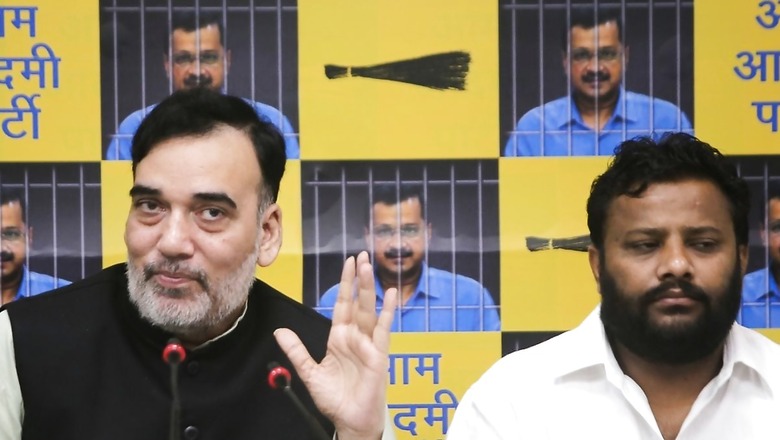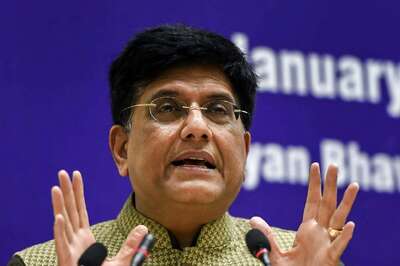
views
Climate change has started impacting lives across cities and to prepare the national capital for this ticking clock, the Delhi government is working on a draft policy to fight the ill-effects of these changes, covering a wide range of areas.
Starting from electricity, water, waste, and green transport to various other aspects of city planning, the Delhi government will make a comprehensive policy by identifying sources of climate change in at least seven important sectors.
On Wednesday, Delhi environment minister Gopal Rai chaired a round table conference involving 40 departments, experts and officials to overhaul the existing climate policy of 2019, highlighting the urgent need for action as the city faces unprecedented heatwaves and record rainfall. “A comprehensive policy will be crafted and sent to the Union government for approval,” the minister said.
The draft of the Delhi State Action Plans on Climate Change (SAPCC) will first need to be finalised by the city government and it will chalk out its implementation plan. The Department of Environment will then submit the Delhi SAPCC to the Union Ministry of Environment, Forest & Climate Change (MOEF&CC) for its approval. The submission is likely to be done in the next two weeks, Rai said.
This new policy is a revision and improvement in the existing 2019 Climate Action Plan.
Focus on Urban Flooding, Waterlogging & Better Drainage System
In the last few weeks, after the arrival of monsoon in Delhi, the city government and the local body — both governed by the Aam Aadmi Party — were criticised for poor drainage system and waterlogging in various parts. A number of people across the city died in various rain-related mishaps, including the deaths of three IAS aspirants in the Old Rajinder Nagar area.
Now, as per the focus areas of the draft policy, the government will ensure implementation of drainage master plans for three basins that are being prepared by the PWD. Further, it also plans to ensure efficient stormwater infrastructure in the city.
There will be a system in place to monitor and resolve urban flooding and waterlogging. This included a better stormwater drainage system and efficient stormwater infrastructure in the city.
The draft also says that the government will establish monitoring systems by installing low-cost sensors which can also be used for issuing warnings for flooding. And there will be regular desilting of these stormwater drains.
“Ensure the pumping of excess water from the roads and low-lying areas through utilisation of appropriate machines. Form Rapid response teams in case of emergencies,” the list with measures read.
Further, there will be protection against riverine flooding by completion of protection work between Palla to Wazirabad Barrage right bank.
The draft also listed protecting the floodplain of River Yamuna in the city by target removal and relocation of the unauthorised habitation and settlements/encroachments. It also said green belt will be built across the Yamuna floodplain as a barrier between Yamuna and urban areas. The government also plans to revive and deepen old river channels on floodplains, wherever possible.
The seven key areas where the government will be working are: Energy and Power; Urban Planning; Water Sector; Forest and Biodiversity; Transport; Agriculture and Horticulture; and Health.
Focus on physical infrastructure
The Delhi government plans to enforce Unified Building Bye-Laws (UBBL) which has made solar installation mandatory in all buildings of rooftop area 105 sq. m and above.
Till April 2022, around 138 MW solar systems on 1,222 government buildings were installed. It also said there will be a policy for the installation of solar systems on all remaining government buildings.
The policy also said the physical infrastructure in Delhi will be adapting. “Underground distribution for protection against wind, high temperatures, corrosion, and flooding may be considered. Introduce effective cooling systems for substations and transformers to help with rising temperatures,” it said.
The draft also said there will be adaptation measures in the urban planning sector as well that will include resilient buildings.
“Target construction of resilient buildings that can withstand the increasing temperatures and the changing rainfall patterns. Ensure integration of well-developed codes and byelaws and energy conservation, sustainability measures, etc. within the byelaws,” it added.
In addition, there will be 100 per cent saturation by 2030 of LED bulbs, LED tube lights and energy efficient fans, and energy-efficient LED street lights.


















![Kia Sonet Compact SUV to Launch in India Today: Watch it Live Here [Video]](https://cdn.rawisda.com/news/90/eb/76/90eb7699f91f82cb9d217ba52d313a8a-s.jpg)
Comments
0 comment